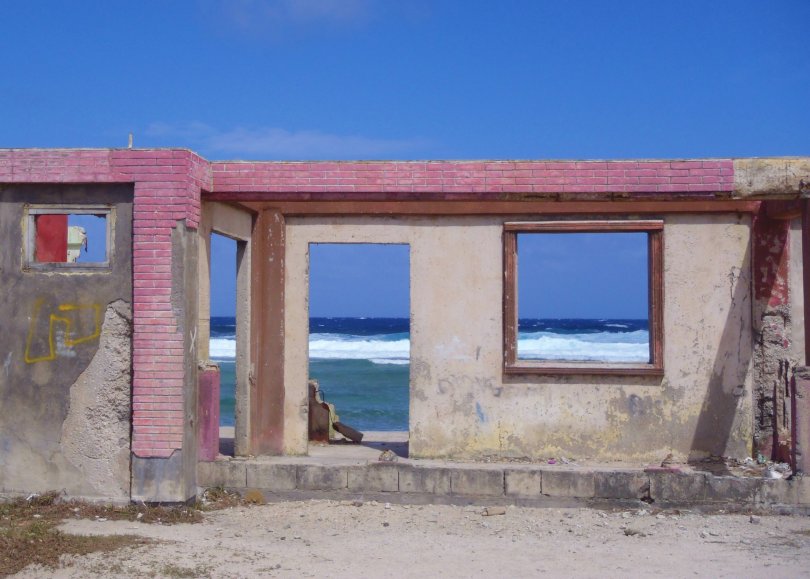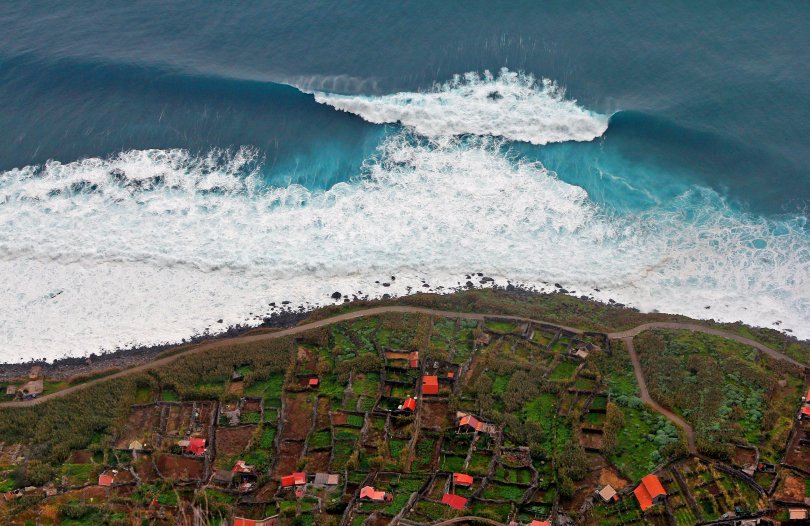
Health and environment
Will the tropical islands soon be wiped off the map, swallowed up by rising seas? From the Caribbean to the Pacific, sandy beaches and coconut palms are slowly slipping beneath the sea. Soon, these paradisiacal landscapes will be nothing but distant memories. For those who live there, their entire lives will be under water. According to economists Cassin, Melindi-Ghidi and Prieur, these populations will have little choice but to migrate.
Rapita, Rehana and Kale or Kepidau and Nahlapenlohd, these names probably mean nothing to you, and with good reason. Engulfed by the sea as a result of rising sea levels, these vanished islands belong respectively to the Solomon archipelago and the Federated States of Micronesia, located in the Pacific Ocean. They have been wiped off the map since 2014. Fortunately, no people lived there. With sea levels rising by two to three millimetres a year, other islands, this time inhabited, are threatened by the consequences of climate change because of their topography and territorial development.
The Pacific and Caribbean islands are next on the list. Erosion spares no coastline. Smaller islands are more vulnerable, and have to cope with all kinds of debacles: drought, storms, rainfall and cyclones. All the more so as their human activities are generally concentrated on the coasts and they are dependent on their natural resources. And yet, unlike other countries, they emit very few greenhouse gases. This injustice has been particularly condemned by President Anote Tong of the peaceful state of Kiribati, who is saddened by "the death of [his] homeland". This extreme case is not isolated. France will have to face up to this challenge, since part of its population lives in overseas island territories. According to Virginie Duvat-Magnan, professor of geography at the University of La Rochelle1, part of the French West Indies will be uninhabitable by 2040, forcing governments to relocate their populations .

Picture by Erin Magee, AusAID © Australian Department of Foreign Affairs and Trade
What can governments do to combat the effects of climate change? They can seek to reduce the risks, i.e. drastically cut greenhouse gas emissions to tackle the root causes of global warming and slow its progress. Another possibility is to adapt, through public policies and infrastructures, to protect themselves from the already advanced effects of global warming. However, in the case of the Pacific and Caribbean islands, risk reduction is virtually impossible because they are not responsible for emissions and so have no way of stopping their increase. The only solution left therefore is to adapt. Among the options, migration could well play a decisive role.
This is the option considered by economists Lesly Cassin, Paolo Melindi-Ghidi and Fabien Prieur in a study entitled "Confronting climate change: Adaptation vs. migration in Small Island Developing States", published in 2022 in the journal Resource and Energy Economics. Focusing on ten Caribbean islands2, they show how migration, combined with adaptation policies, is becoming an inevitable solution as climate damage takes its toll.
They are known as SIDS or "Small Island Developing States". This acronym covers all the countries located at sea level facing challenges that are out of all proportion to their small size: limited resources, isolation and dependence on international trade coupled with increasing natural disasters. The islands concerned are located in the four corners of the world, from the Caribbean to the Pacific, via Africa and the Indian Ocean. Looking at ten Caribbean islands alone, the researchers found considerable differences in terms of demography, vulnerability to global warming and availability of natural resources.
Scientists take this heterogeneity into account when considering the strategies that states should put in place to deal with a problem of this scale. In their view, the role of migration depends mainly on the size of the population and its endowment with natural capital. The latter is measured in terms of arable land, freshwater reserves, ecosystems and marine and terrestrial biodiversity. The authors focus in particular on the damage suffered by these natural assets, since they are particularly threatened by climate change. They analyse the responses of SIDS according to their degree of exposure to the consequences of global warming.

Picture by Victor Alvarez Moles on Flicker
Imagine a government forced to relocate its entire population because its land is drowning. This is more or less the worst-case scenario feared by the island republic of Kiribati, like many others. Of course, to cope with the gradual erosion, governments are putting in place so-called adaptation policies, involving for example the construction of infrastructure. In Kiribati, for instance, pavements have been raised to prevent waves from reaching the road. However, the danger of extinction is such that most states are being forced to plan their exodus.
In a situation where migration is unavoidable, the researchers examine the best solution to adopt, taking into account different scenarios. Their analysis differs from other studies that consider migration as a household decision. In this case, it is a government decision to encourage the population to migrate through the implementation of public policies. A solution apparently at odds with any patriotic logic. However, faced with climate damage, the SIDS will have to consider it seriously. This choice results from a trade-off between two sources of wealth. While migration affects productivity by reducing the workforce, it also offers a number of advantages. It can increase national income through remittances from the diaspora living abroad. This financial windfall then enables states to finance their adaptation, the lack of money being one of the main obstacles to implementing such policies. But how can governments encourage their populations to migrate?

Picture by John Rodenn Castillo on Unplash
The President of Kiribati is pragmatic: he favours a gradual migration rather than the displacement of his hundred thousand or so fellow citizens in the event of a major climatic force. He has therefore set up the "Migration with Dignity" programme, encouraging the training of its inhabitants so that they can work legally, particularly in Australia and New Zealand. He has also signed agreements with Kiribati’s Pacific neighbours, Tuvalu, Fiji, Tonga and New Zealand. These measures enable those who benefit from them to emigrate. States can influence migration by implementing education policies or signing agreements with neighbouring countries.
Kiribati is a pioneer in this field. For the time being, the other SIDS have not developed mechanisms on this scale. Yet this is the solution that the Caribbean islands should be moving towards in the long term. According to economists, most of them will have to implement policies that combine adaptation and migration strategies. Indeed, in view of the environmental degradation, it will become increasingly difficult to adapt, so they will have to conduct policies to encourage migration. Finally, the greater the damage caused by climate change, the more the SIDS will have to step up their policies, either by strengthening their measures or by adding them together, if this is not already the case.
By making migration a fully-fledged solution for combating climate change and, above all, the disappearance of islands, the study raises some serious questions for the international community. On the one hand, it establishes - if proof were still needed - that global warming will generate migratory phenomena with major consequences for the countries of origin. Secondly, by showing that SIDS will have no choice but to relocate part of their population abroad, a message is being sent to neighbouring continents. If island populations have to leave their islands, then they will have to find refuge somewhere, and this calls for open borders. For the time being, however, this approach has been rather timid. For example, until the COVID crisis, New Zealand reserved just 75 places a year for migrants from Kiribati. With a population of 110,000, it would take more than a century for the entire population to be transferred to New Zealand. By which time, the island would already have been swallowed up. The question of this migration is therefore one for the international community as a whole and perhaps, in particular, for the former colonial empires that have maintained links with their ex-colonies, notably in the form of a Community similar to the Commonwealth as in the United Kingdom, or relations between metropolises and overseas collectivities as in France.